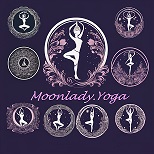Subscribe to get access
Ayurveda, according to one school of thought, is the Upaveda of the Atharva Veda or Rigveda or Panchama Veda. It is also considered the Upanga of the Atharva Veda. In other words, it is not imposed or added from outside, but is an integral part of the Vedic body.
Ayurveda is the modern traditional medicine of India. Ayurveda means the science of life.
-Ayur means life.
-Veda means knowledge, study.
The Vedas are the oldest religious texts of India; there are four Vedas.
- 1. Rig Veda
- Yajur Veda
- Sama Veda.
- and the Atharva Veda.
The Vedas are probably the oldest religious texts in existence today. It is possible that the Rig Veda was written 3000 years before the birth of Christ and more than 1000 years before the Old Testament (The first five books of the Old Testament were probably written around 1250 B.C.).
The Rig Veda is the oldest Veda and is considered the foundational document of Hinduism; it consists of 10 books containing a total of 10,572 verses.
The Atharva Veda contains most of the medical ideas of Ayurveda, including herbal prescriptions and mystical ideas for curing diseases and maintaining mental and physical health. Around 1000 BC, Ayurveda became more scientific, emphasizing observation and distinguishing between physicians and surgeons, each with his own knowledge.
Some physicians and surgeons began to read the four Vedas, compiling the medical ideas they contained and verifying them empirically. As a result, several medical books based on the Vedas were created. One of them, the Charaka Samhita, contains medicinal herbs, treatments and advice for maintaining mental health. It also describes surgical tools and techniques.
Indian medical texts from 1,000 to 700 BC contain detailed knowledge of anatomy and the concept of energy flows, as in ancient Chinese medicine. Between 2,000 and 200 BC, medical schools were established in major Indian cities, making nursing a medical profession. Greek and Roman intellectuals visited Indian medical centers and brought with them Ayurvedic ideas, which may have directly influenced Western medicine. In the 8th century AD, Indian physicians were invited to Baghdad to train Persian and Arab physicians.
In modern India there are more than 50 medical schools where Ayurveda is taught and practiced. In 1996 there were 108 Ayurvedic hospitals in Kerala (India) along with 230 Western hospitals. In many villages there are also Ayurvedic doctors and clinics.
Ayurvedic physicians rely almost exclusively on symptom analysis and do not perform blood tests or other expensive and invasive procedures. Modern Ayurveda uses X-rays and blood pressure measuring devices. Ayurvedic theory involves an incredibly complex model of the human body and an extensive pharmacology of plant and herbal concentrates. However, a crude and simplified version of this system allows us to understand some of its elements.
The human being consists of three gunas, or primal qualities.
- (sattva) intellect
- (tamasa) motor body
- (tamasa) inertia, which is opposed to the other two.
Ayurveda tries to harmonize the balance between these three gunas.
Ayurveda postulates five basic elements in nature (ether, air, fire, water and earth) which correspond to the five human senses (ear, skin, eye, tongue and nose). Ayurveda understands that food produces energy in the body. This energy is called “vata” (wind). Vata moves through the body and performs various tasks.
Read more of this content when you subscribe today.
